#adobe experience manager implementation
Explore tagged Tumblr posts
Text
Mastering Digital Experiences: Adobe Experience Manager Implementation Guide
In today's fast-paced and highly competitive business landscape, digital experiences play a crucial role in shaping the success of businesses. With the increasing shift towards online interactions and transactions, businesses are constantly seeking ways to enhance their digital presence and engage their audience effectively.
Adobe Experience Manager Implementation emerges as a powerful and versatile tool for managing digital content, offering a comprehensive solution for businesses looking to streamline their content management and delivery processes.
Understanding Adobe Experience Manager (AEM)
Adobe Experience Manager Implementation stands as a leading digital experience management solution that empowers businesses to create, manage, and optimize digital customer experiences across various channels.
Its key features and capabilities are designed to offer a seamless and integrated approach to content management, digital asset management, and personalization. AEM's robust capabilities enable businesses to deliver compelling digital experiences that are both engaging and impactful.
AEM facilitates streamlined content management and delivery processes, allowing businesses to efficiently create, manage, and deliver content across various digital channels. It provides a unified platform for content creation, editing, and publishing, thereby enabling businesses to maintain consistency and coherence in their digital messaging.
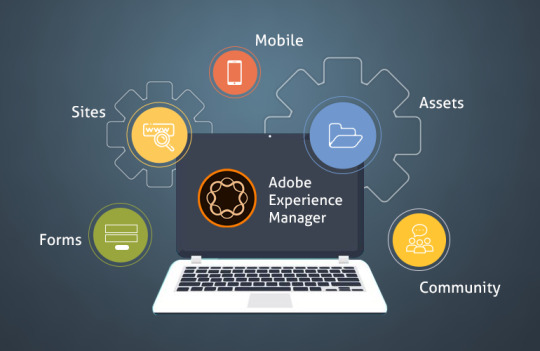
Planning for AEM Implementation
Embarking on an AEM implementation requires thorough planning and preparation to ensure the successful adoption and integration of the platform within an organization. The process involves assessing organizational needs, defining implementation goals, and establishing a clear roadmap for the implementation journey.
To prepare for an AEM implementation, it is essential to conduct a comprehensive analysis of the organization's existing digital infrastructure and content management practices. This evaluation will provide valuable insights into the specific requirements and challenges that need to be addressed through the AEM implementation.
Setting realistic and achievable implementation goals is crucial for aligning the AEM implementation with the broader strategic objectives of the organization. By defining clear goals, businesses can effectively measure the success of the implementation and track the impact of AEM on their digital experiences.
Setting Up AEM Environment
Setting up a robust and efficient AEM environment entails understanding the technical prerequisites and best practices for configuring AEM to meet the specific needs of an organization. The technical requirements for AEM implementation encompass considerations related to infrastructure, performance, security, and scalability.
Establishing the AEM environment involves deploying the necessary infrastructure, including servers, databases, and network configurations, to support the seamless operation of AEM. It is essential to adhere to best practices in configuring AEM to ensure optimal performance and reliable operation.
In addition to deploying the necessary infrastructure, establishing an Adobe Experience Manager (AEM) environment involves several key steps to ensure a smooth and efficient setup. One crucial aspect is selecting an appropriate deployment topology based on the specific requirements of the organization. AEM supports various deployment scenarios, such as author and publish instances, as well as a dispatcher for content delivery. Careful consideration of the organization's needs and traffic patterns is essential for determining the optimal topology.
Content Authoring and Management in AEM
AEM offers a comprehensive set of tools and features for content authoring and management, empowering businesses to create and manage digital content effectively. The platform's intuitive user interface and robust authoring capabilities enable content creators to craft engaging and compelling content for diverse digital channels.
Effective content management within the AEM platform involves establishing structured workflows, version control mechanisms, and content governance practices. These elements are essential for maintaining the quality, consistency, and relevance of digital content across various touchpoints.
Structured workflows play a crucial role in effective content management within the Adobe Experience Manager (AEM) platform. These workflows define the sequence of tasks and activities that content goes through, from creation to publication. By establishing clear and well-defined workflows, organizations can ensure that content creation, review, approval, and publishing processes are streamlined and efficient. This not only improves productivity but also minimizes the chances of errors and inconsistencies in the content development lifecycle.
Customizing User Experiences with AEM
Personalizing and customizing user experiences is a key aspect of mastering digital experiences, and AEM provides a rich set of tools and features to achieve this objective. Businesses can leverage AEM's capabilities to create personalized and engaging user experiences that resonate with their target audience.
AEM offers robust capabilities for segmenting audiences, delivering targeted content, and analyzing user interactions to optimize the digital experience. By harnessing these features, businesses can tailor their digital experiences to meet the specific needs and preferences of their audience, thereby enhancing engagement and loyalty.
Optimizing Performance and Scalability of AEM
Ensuring the performance and scalability of an AEM implementation is critical for delivering seamless digital experiences, especially in high-traffic scenarios. Optimizing the performance of AEM involves implementing best practices for caching, load balancing, and content delivery to minimize latency and enhance responsiveness.
Scalability considerations revolve around the ability of the AEM environment to accommodate growing volumes of traffic and content without compromising performance. By implementing scalable architectures and performance optimization strategies, businesses can ensure that their digital experiences remain robust and reliable under increasing demand.
One key aspect of scalability in the Adobe Experience Manager (AEM) environment is the architecture itself. A well-designed architecture provides the foundation for scalability by allowing the system to distribute and handle workloads efficiently. This involves considerations such as load balancing, distribution of resources, and the ability to horizontally scale by adding more servers or nodes to the environment.
Load balancing plays a crucial role in distributing incoming traffic across multiple servers, ensuring that no single server bears an excessive load. This prevents bottlenecks and enhances the system's overall ability to handle increasing volumes of requests. AEM implementations often leverage load balancing technologies to achieve optimal distribution and maintain performance during peak traffic times.
In addition to architectural considerations, performance optimization strategies are essential for achieving and maintaining scalability. This involves fine-tuning various components of the AEM environment, including code, databases, and caching mechanisms. Efficient code practices, database indexing, and caching strategies contribute to faster response times and reduced resource utilization, enabling the system to handle more requests without compromising performance.
Conclusion
Mastering digital experiences through Adobe Experience Manager implementation offers businesses a strategic advantage in today's digital landscape. By understanding the key features and capabilities of AEM, planning for a successful implementation, and leveraging the platform's tools for content authoring, customization, and optimization, businesses can elevate their digital experiences to new heights.
As businesses strive to establish a strong online presence and engage their audience effectively, AEM emerges as a valuable ally in their journey towards digital excellence. By embracing AEM and harnessing its capabilities, businesses can position themselves for success in the digital era, delivering compelling and impactful experiences that resonate with their audience.
Source URL: https://adobe-marketing-automation.blogspot.com/2024/01/mastering-digital-experiences-adobe.html
0 notes
Text
Adobe Experience Manager Services USA: Empowering Digital Transformation
Introduction
In today's digital-first world, Adobe Experience Manager (AEM) Services USA have become a key driver for businesses looking to optimize their digital experiences, streamline content management, and enhance customer engagement. AEM is a powerful content management system (CMS) that integrates with AI and cloud technologies to provide scalable, secure, and personalized digital solutions.
With the rapid evolution of online platforms, enterprises across industries such as e-commerce, healthcare, finance, and media are leveraging AEM to deliver seamless and engaging digital experiences. In this blog, we explore how AEM services in the USA are revolutionizing digital content management and highlight the leading AEM service providers offering cutting-edge solutions.
Why Adobe Experience Manager Services Are Essential for Enterprises
AEM is an advanced digital experience platform that enables businesses to create, manage, and optimize digital content efficiently. Companies that implement AEM services in the USA benefit from:
Unified Content Management: Manage web, mobile, and digital assets seamlessly from a centralized platform.
Omnichannel Content Delivery: Deliver personalized experiences across multiple touchpoints, including websites, mobile apps, and IoT devices.
Enhanced User Experience: Leverage AI-driven insights and automation to create engaging and personalized customer interactions.
Scalability & Flexibility: AEM’s cloud-based architecture allows businesses to scale their content strategies efficiently.
Security & Compliance: Ensure data security and regulatory compliance with enterprise-grade security features.
Key AEM Services Driving Digital Transformation in the USA
Leading AEM service providers in the USA offer a comprehensive range of solutions tailored to enterprise needs:
AEM Sites Development: Build and manage responsive, high-performance websites with AEM’s powerful CMS capabilities.
AEM Assets Management: Store, organize, and distribute digital assets effectively with AI-driven automation.
AEM Headless CMS Implementation: Deliver content seamlessly across web, mobile, and digital channels through API-driven content delivery.
AEM Cloud Migration: Migrate to Adobe Experience Manager as a Cloud Service for improved agility, security, and scalability.
AEM Personalization & AI Integration: Utilize Adobe Sensei AI to deliver real-time personalized experiences.
AEM Consulting & Support: Get expert guidance, training, and support to optimize AEM performance and efficiency.
Key Factors Defining Top AEM Service Providers in the USA
Choosing the right AEM partner is crucial for successful AEM implementation in the USA. The best AEM service providers excel in:
Expertise in AEM Development & Customization
Leading AEM companies specialize in custom AEM development, ensuring tailored solutions that align with business goals.
Cloud-Based AEM Solutions
Cloud-native AEM services enable businesses to scale and manage content efficiently with Adobe Experience Manager as a Cloud Service.
Industry-Specific AEM Applications
Customized AEM solutions cater to specific industry needs, from e-commerce personalization to financial services automation.
Seamless AEM Integration
Top providers ensure smooth integration of AEM with existing enterprise tools such as CRM, ERP, and marketing automation platforms.
End-to-End AEM Support & Optimization
Comprehensive support services include AEM migration, upgrades, maintenance, and performance optimization.
Top AEM Service Providers in the USA
Leading AEM service providers offer a range of solutions to help businesses optimize their Adobe Experience Manager implementations. These services include:
AEM Strategy & Consulting
Expert guidance on AEM implementation, cloud migration, and content strategy.
AEM Cloud Migration & Integration
Seamless migration from on-premise to AEM as a Cloud Service, ensuring scalability and security.
AEM Development & Customization
Tailored solutions for AEM components, templates, workflows, and third-party integrations.
AEM Performance Optimization
Enhancing site speed, caching, and content delivery for improved user experiences.
AEM Managed Services & Support
Ongoing maintenance, upgrades, and security monitoring for optimal AEM performance.
The Future of AEM Services in the USA
The future of AEM services in the USA is driven by advancements in AI, machine learning, and cloud computing. Key trends shaping AEM’s evolution include:
AI-Powered Content Automation: AEM’s AI capabilities, such as Adobe Sensei, enhance content personalization and automation.
Headless CMS for Omnichannel Delivery: AEM’s headless CMS capabilities enable seamless content delivery across web, mobile, and IoT.
Cloud-First AEM Deployments: The shift towards Adobe Experience Manager as a Cloud Service is enabling businesses to achieve better performance and scalability.
Enhanced Data Security & Compliance: With growing concerns about data privacy, AEM service providers focus on GDPR and HIPAA-compliant solutions.
Conclusion:
Elevate Your Digital Experience with AEM Services USA
As businesses embrace digital transformation, Adobe Experience Manager services in the USA provide a powerful, scalable, and AI-driven solution to enhance content management and customer engagement. Choosing the right AEM partner ensures seamless implementation, personalized experiences, and improved operational efficiency.
🚀 Transform your digital strategy today by partnering with a top AEM service provider in the USA. The future of digital experience management starts with AEM—empowering businesses to deliver exceptional content and customer experiences!
3 notes
·
View notes
Text
A Comprehensive Guide to Developing Custom E-Commerce Websites in 2024

In the dynamic landscape of web commerce development, building a custom e-commerce website has become essential for businesses seeking to establish a strong online presence and drive sales. As we navigate through 2024, the demand for unique, user-friendly, and feature-rich e-commerce platforms continues to grow. In this comprehensive guide, we'll explore the key steps and considerations involved in developing custom e-commerce websites, with insights from Xettle Technologies, a leading provider of innovative web commerce solutions.
Define Your Objectives and Requirements: The first step in developing a custom e-commerce website is to define your objectives and requirements. Consider factors such as your target audience, product range, business goals, and budget. Are you looking to create a sleek and modern storefront, or do you require advanced features such as inventory management, order tracking, and customer accounts? By clearly outlining your needs, you can ensure that your e-commerce website is tailored to meet your specific requirements.
Choose the Right E-commerce Platform: Selecting the right e-commerce platform is crucial for the success of your online store. Evaluate the features, scalability, customization options, and pricing of different platforms to find the one that best suits your needs. Popular options include WooCommerce, Shopify, Magento, and BigCommerce, each offering unique advantages depending on your business size and requirements. Xettle Technologies offers expertise in various e-commerce platforms and can assist you in selecting the ideal solution for your business.
Design a User-Centric Interface: The design of your e-commerce website plays a significant role in attracting and retaining customers. Aim for a clean, intuitive, and mobile-responsive interface that enhances the user experience. Incorporate high-quality images, clear navigation menus, and prominent calls-to-action to guide visitors through the purchasing process. Consider usability testing and feedback from real users to refine your design and optimize conversion rates. Xettle Technologies specializes in creating user-centric e-commerce interfaces that captivate audiences and drive engagement.
Implement Secure Payment Gateways: Security is paramount in e-commerce transactions to instill trust and protect sensitive customer information. Integrate secure payment gateways that comply with industry standards and encryption protocols, such as SSL/TLS encryption and PCI DSS compliance. Offer a variety of payment options, including credit cards, digital wallets, and alternative payment methods, to accommodate customer preferences. Xettle Technologies provides robust payment gateway integration services, ensuring seamless and secure transactions for your e-commerce website.
Optimize for Search Engines: To maximize visibility and drive organic traffic to your e-commerce website, it's essential to optimize it for search engines. Conduct keyword research, optimize product descriptions and metadata, and implement on-page SEO best practices to improve your website's ranking in search engine results pages (SERPs). Additionally, consider implementing structured data markup to enhance the visibility of your products in search engine listings. Xettle Technologies offers SEO services tailored to e-commerce websites, helping you achieve higher search engine rankings and attract qualified traffic.
Enable Analytics and Tracking: Track and analyze user behavior, sales performance, and website metrics to gain valuable insights into your e-commerce operations. Implement analytics tools such as Google Analytics or Adobe Analytics to monitor website traffic, conversion rates, and customer engagement. Utilize this data to identify opportunities for optimization, refine your marketing strategies, and enhance the overall performance of your e-commerce website. Xettle Technologies integrates advanced analytics and tracking capabilities into custom e-commerce websites, empowering businesses to make informed decisions and drive growth.
Ensure Scalability and Flexibility: As your business grows, your e-commerce website should be able to scale and adapt to accommodate increasing traffic and evolving requirements. Choose a flexible and scalable architecture that can support future growth and expansion. Regularly update and maintain your website to ensure optimal performance, security, and compatibility with emerging technologies. Xettle Technologies offers scalable web commerce development solutions that grow with your business and adapt to changing market dynamics.
In conclusion, developing a custom e-commerce website requires careful planning, strategic execution, and ongoing optimization. By defining your objectives, choosing the right platform, designing a user-centric interface, implementing secure payment gateways, optimizing for search engines, enabling analytics and tracking, and ensuring scalability and flexibility, you can create a successful online store that drives sales and enhances customer satisfaction. Partnering with a trusted provider like Xettle Technologies can help you navigate the complexities of web commerce development and achieve your e-commerce goals in 2024 and beyond.
2 notes
·
View notes
Text
Difference between Web Design and Development: Build Your Site with Buzzz Booster
Web design and development are two closely related but distinct disciplines that involve creating and maintaining websites.

Web Design:
Web design focuses on the aesthetic and user experience aspects of a website. It involves creating the layout, visual elements, typography, and overall look and feel of the site.
Web designers use tools like Adobe Photoshop, Sketch, or Adobe XD to create mock-ups and prototypes of websites. They also consider factors such as user interface (UI) design, colour schemes, branding, and accessibility.
Key skills for web designers include graphic design, typography, colour theory, and understanding of user experience (UX) principles.

Web Development:
Web development refers to the process of building and maintaining the functionality of a website. It involves writing code that powers the website and makes it interactive and dynamic.
Web developers use languages like HTML, CSS, and JavaScript for front-end development (what users see and interact with in their browsers) and languages like PHP, Python, Ruby, or Node.js for back-end development (server-side scripting and database management).
Web developers may also work with frameworks and libraries like React.js, AngularJS, or Vue.js for front-end development and frameworks like Django, Ruby on Rails, or Express.js for back-end development.
Key skills for web developers include proficiency in programming languages, understanding of web architecture, databases, APIs, and knowledge of web security best practices.

Buzzz Booster is a trusted web design and development agency dedicated to building innovative and user-friendly websites. With a focus on both design and functionality, Buzzz Booster combines creative expertise with technical proficiency to deliver outstanding web solutions. Their commitment to crafting engaging user experiences and implementing cutting-edge technologies sets them apart in the industry. Whether it's designing captivating visuals or developing robust functionalities, Buzzz Booster ensures that every aspect of their websites aligns with the client's goals and exceeds expectations. Clients can rely on Buzzz Booster for reliable, scalable, and visually stunning web solutions that leave a lasting impression on users.
Contact Details:
Website: BuzzzBooster.com
Phone: +91 88262 14661/ +91 77019 29228/ +1 727 239 7957
2 notes
·
View notes
Text
Selecting the Best Content Management System for Your Business Website

The content management system (CMS) powering your business website significantly impacts its capabilities, performance, and ease of use over time. With web developers today spoiled for choice between open source CMS options like WordPress and Drupal or proprietary systems like Adobe Experience Manager and HubSpot, the evaluation process proves daunting for companies. When embarking on a website project or redesign, stay focused on your organization’s unique needs, resources, and business priorities when weighing the pros and cons of various CMS platforms.
First, take time to thoroughly consider what types of content, assets, and functionality matter most to your brand and audience day to day. For example, blogging, news publishing and journalist teams center heavily around text creation and workflow. Multimedia creatives and marketers, however, need robust digital asset management and organization. Let your website designer align technology recommendations to your primary content focus and goals.
Also, realistically assess the technical skills and resources your team brings to the table for effectively managing the CMS if opting for an open source platform like Drupal or Joomla. While extremely powerful, these systems demand solid web development expertise to customize, which represents an added cost. Simpler tools like WordPress may suffice.
Evaluate prospective CMS options in regards to built-in workflow capabilities as well, like approvals, permissions, and multi-channel content publishing abilities out of the box. Understanding your collaborators’ needs shaping real-world content operations keeps implementations smoother. Select CMS tools accordingly.
Importantly, test and ensure any short-listed CMS easily integrates with your other vital back-end systems like ecommerce engines, CRM platforms, marketing automation tools, etc. An experienced website designer already familiar with related integrations will recognize any limitations or hurdles.
Lastly, the ultimate CMS decision should effectively balance your desired functionality wishlist, readiness of staff resources to leverage the platform fully, and sufficient ease of use for non-technical folks who will actually manage content. With an expert website designer guiding the process holistically using these criteria, your ideal CMS solution match for current and future needs emerges.
2 notes
·
View notes
Text
Why Magento Custom Development Services in Dubai Are Key to Scalable E-Commerce Success
In Dubai’s fast-paced and highly competitive digital market, having an e-commerce website that just “functions” isn’t enough anymore. With shifting consumer demands, expanding online marketplaces, and a rise in mobile-first shopping behavior, businesses must focus on customization and scalability like never before. That’s where Magento Custom Development Services in Dubai come into play.

Magento is one of the most powerful and flexible e-commerce platforms available today. It’s trusted by thousands of brands globally — and locally — for its ability to deliver tailor-made, scalable, and secure shopping experiences. But to truly harness its potential, especially in a dynamic region like the UAE, custom development is critical.
In this blog, we explore why Magento custom development is the ideal solution for businesses in Dubai, how it supports long-term scalability, and why partnering with local Magento experts makes all the difference.
1. Understanding the Magento Advantage
Magento (now Adobe Commerce) is a highly flexible open-source e-commerce platform built for customization. Unlike rigid plug-and-play platforms, Magento allows businesses to mold their store’s design, functionality, and backend operations to fit precise needs.
Some standout features of Magento include:
Advanced product catalog management
Mobile-optimized shopping
Robust SEO capabilities
Multi-store and multi-language support
Integration with payment gateways and ERP systems
Extensive customization via extensions and modules
But to make the most of these capabilities, businesses often need Magento custom development services in Dubai to tailor the platform for their unique operations and audience.
2. The Need for Customization in the Dubai Market
Dubai is a melting pot of cultures, buying behaviors, and industries. Whether you're targeting local Emiratis, expats, or global customers, a one-size-fits-all e-commerce solution simply won’t cut it.
Here’s how custom development helps:
Language & Currency Flexibility Add Arabic language support and enable seamless multi-currency payments to suit Dubai’s diverse audience.
Custom Checkout Experience Tailor checkout processes for B2B vs. B2C users, or create loyalty-based flows specific to regional preferences.
Local Integration Integrate your Magento store with local shipping providers (e.g., Aramex, Fetchr), payment gateways (e.g., Telr, PayTabs), and ERP/CRM systems.
UAE VAT Compliance Implement custom tax logic to ensure accurate VAT handling and invoicing as per UAE law.
All of this requires expertise — not just in Magento — but in the local e-commerce landscape, which only a top Magento development team in Dubai can deliver.
3. Why Magento Custom Development Is Essential for Scalability
Scalability is more than just handling increased traffic; it’s about expanding features, launching new product lines, entering new markets, and evolving the customer experience. Magento custom development helps you:
a. Build for High-Traffic Performance
Optimized custom code, advanced caching, and cloud deployment solutions ensure your store performs at peak, even during major sales seasons like Ramadan or Dubai Shopping Festival.
b. Extend Functionality Over Time
Whether it’s launching a mobile app, creating a marketplace, or adding subscription models — custom development lets you adapt your Magento store as your business evolves.
c. Enable Advanced Marketing Tools
From personalized promotions to automated email workflows and advanced analytics integrations, custom development brings your marketing vision to life.
d. Future-Proof Your Business
Magento supports headless architecture, meaning you can separate the front-end from the back-end — enabling integration with new front-end technologies in the future.
4. Security and Performance: Customized for Peace of Mind
Dubai’s e-commerce scene is built on trust. With increasing cybersecurity threats and stricter data regulations, security can’t be compromised. Magento custom development enables:
Security Patch Installation Ensure regular and timely Magento Security Patch Installation tailored to your setup.
Custom Role Management Define user permissions that match your business hierarchy — essential for mid-to-large businesses.
Secure Payment Gateways Customize integrations with PCI-compliant payment processors that meet UAE standards.
Bot Protection & DDoS Prevention Implement custom firewalls and anti-bot measures to prevent fraudulent activities.
With the right Magento partner, your store is not only high-performing but also secure and compliant.
5. Why Choose Magento Custom Development Services in Dubai
There are several global Magento agencies, but local expertise makes a crucial difference. Here’s why choosing Magento development in Dubai pays off:
a. Regional Market Knowledge
A Dubai-based agency understands the local market, buyer behavior, logistics providers, payment preferences, and regulatory requirements.
b. Time-Zone Compatibility & On-Ground Support
Work in your time zone, get face-to-face meetings, and access real-time support — something offshore agencies may not offer.
c. Faster Project Turnaround
Local teams can streamline timelines and deployment through better coordination, faster testing, and UAE-specific templates.
d. Ongoing Maintenance & Scaling Support
Post-launch support is crucial. A local Magento development partner can handle version upgrades, performance tuning, and new features as your business grows.
6. What to Look for in a Magento Developer in Dubai
When choosing a Magento developer or agency, here are the key qualities to consider:
Adobe Certified Magento Developers Certified developers know Magento inside and out and follow best practices.
Portfolio of Custom Projects Check for case studies showing customized solutions, especially for businesses in the UAE.
Expertise in Security and Performance Make sure they have experience with Magento security patch installation, speed optimization, and server scaling.
Ongoing Support Services Ensure they provide long-term support, including backup systems, monitoring, and periodic enhancements.
7. Custom Magento vs. Ready-Made E-Commerce Platforms
While platforms like Shopify and WooCommerce offer fast setup, they often fall short for businesses that want to grow, scale, or innovate.
If you’re planning to stay competitive and future-ready, investing in custom development with Magento is the smarter choice.
Conclusion: Scale Smartly with Magento Custom Development in Dubai
As e-commerce continues to boom across Dubai and the UAE, businesses must move beyond out-of-the-box websites and embrace customization. Magento custom development services in Dubai offer the perfect mix of flexibility, performance, and scalability to power your growth — now and in the future.
Whether you're building a new store or upgrading an existing one, custom Magento development is the key to long-term success in the region's fast-evolving digital marketplace.
About Safcodes
At Safcodes, we specialize in Magento web development and custom e-commerce solutions tailored for businesses in Dubai and the wider UAE. From advanced module development to performance optimization and Magento Security Patch Installation in Dubai, our team is here to build scalable, secure, and high-performing Magento stores that align with your business goals.
#Magento Custom Development Services in Dubai#Magento web agency in dubai#Magento web development in dubai
0 notes
Text
Why Choose Web Era Solutions for Graphic Design Services?

In today’s competitive digital world, design isn’t just about aesthetics—it’s about communication, branding, and creating an unforgettable first impression. Whether you’re a startup or an established business, having strong visual assets is crucial to success.
That’s where Web Era Solutions comes in. We are not just a digital agency—we are your creative partner in building a visual identity that speaks volumes. Here's why we are the go-to company for graphic design services that deliver real impact.
Creative Excellence That Captures Your Brand
Innovation is the driving force behind our work at Web Era Solutions. Our team of designers doesn’t just follow trends—they create them. Every design is tailored to reflect your brand’s story, voice, and audience.
Our creative capabilities include:
Custom logo design
Business cards, flyers, and brochures
Social media graphics
Website UI/UX designs
Infographics and illustrations
Corporate presentations and banners
We take time to understand your brand and ensure every design asset aligns with your vision and values.
Experienced & Professional Design Team
Our team of seasoned graphic designers brings years of industry experience and technical expertise to the table. They are proficient in:
Adobe Photoshop, Illustrator, InDesign
Figma and Adobe XD for UI/UX
Canva for fast social designs
CorelDRAW and Sketch for vector-based work
From pixel-perfect layouts to bold, artistic visuals—we have the skills to make your brand stand out.
Fast Turnaround Times with Zero Compromise
In business, time is money. We understand the importance of deadlines and pride ourselves on delivering creative work quickly without compromising on quality.
Why clients love our process:
Efficient project management
Quick revisions
Clear timelines and delivery schedules
Transparent communication at every step
You’ll always know what to expect and when.
Innovative, Trend-Driven Designs
Design is ever-evolving—and so are we. We stay updated with the latest graphic design trends, tools, and technology to ensure your visuals feel modern and fresh.
2025 design trends we implement:
Minimalist layouts with bold typography
3D and immersive visuals
Gradient overlays and dynamic color schemes
Responsive design for mobile and social platforms
Motion graphics and animated designs
Client-Centered Approach
What sets Web Era Solutions apart is our dedication to client satisfaction. We don’t just deliver what you ask—we guide you with our insights and ensure the final design exceeds your expectations.
We offer:
Free consultations
Collaborative feedback loops
Unlimited minor revisions
Friendly support and advice
“Web Era Solutions gave our brand a new life through their designs. Their creativity and dedication are unmatched.” – Priya T., Clothing Brand Owner
Affordable Packages for Every Business
We believe that high-quality design should be accessible to all businesses—big or small. That’s why we offer cost-effective graphic design services tailored to your budget.
Our packages include:
Startup kits (logo, business card, and social media kit)
Monthly design retainers for ongoing needs
One-time project-based pricing
Custom quotes for bulk or enterprise designs
Whether you need a single design or a full branding overhaul, we have a solution that fits.
Trusted by Brands Across Industries
Our customers are from a variety of industries, including:
E-commerce
Real estate
Health & wellness
Education
Hospitality
Technology startups
The same amount of enthusiasm, accuracy, and professionalism are given to every assignment.
Design That Converts
Beyond appearances, we prioritise designs that provide outcomes. Every banner, post, or brochure we create is crafted with a purpose—whether it's to:
Increase engagement
Improve brand recall
Drive more clicks
Generate leads or sales
Design isn’t just art—it’s strategy.
Final Thoughts
When you choose Web Era Solutions, you’re not just hiring a graphic design agency—you’re partnering with a creative powerhouse that’s passionate about helping your business grow.
Our blend of innovation, affordability, professionalism, and results-driven design makes us the smart choice for businesses that want to make a lasting impression.
Looking for the best graphic design services for your brand?
Let Web Era Solutions bring your ideas to life—beautifully and effectively.
0 notes
Text
Best Practices from Egypt’s Top Mobile App Developers
In the fast-paced digital age, businesses across the globe are racing to create seamless, scalable, and engaging mobile experiences for their users. While numerous countries offer mobile app development services, Egypt has emerged as a standout leader in this space, backed by a unique mix of affordability, talent, and innovation.
So, what makes the top mobile app developers in Egypt so successful? What are the industry best practices that help Egyptian firms deliver world-class apps across various industries?
This blog dives into the proven strategies and professional habits of mobile app development companies in Egypt, spotlighting expert insights from leaders like Five Programmers, one of the most trusted names in the field.
Why Egypt Is Dominating the App Development Market in 2025
Before exploring the best practices, it’s important to understand why Egypt’s mobile app development industry is booming.
Educated and skilled tech talent: Egypt produces thousands of graduates with specialized training in app development technologies, from Flutter and Swift to AI integrations.
Cost-effective without compromising quality: You can get high-end applications developed at a fraction of Western development costs.
Government digital transformation initiatives: From Smart Egypt to the New Administrative Capital tech zones, the infrastructure supports innovation.
Thanks to these factors, mobile app development in Egypt is gaining global attention for both startups and established enterprises.
Best Practices Followed by Egypt’s Top Mobile App Developers
Let’s take a deep dive into the practices that define Egypt’s leading mobile app development companies and have helped them earn international recognition in 2025.
1. User-Centered Design (UCD)
Egyptian developers understand that a successful app starts with user-centric design. They prioritize UI/UX research by:
Creating detailed user personas
Mapping user journeys
Conducting A/B testing
Using tools like Figma and Adobe XD for prototyping
This process ensures the final product is intuitive and engaging. Companies like Five Programmers have built a reputation for delivering apps that not only look good but also provide seamless user experiences.
2. Agile Methodology and Iterative Development
Top developers in Egypt use Agile methodologies to break large projects into manageable sprints. This allows:
Faster time-to-market
Flexibility in implementing client feedback
Regular product updates
Reduced development risks
Whether you're building an eCommerce app or a logistics platform, mobile app developers in Egypt ensure full transparency and collaboration throughout the development cycle.
3. Cross-Platform Development with Modern Frameworks
To reduce development time and increase scalability, Egyptian firms frequently use cross-platform tools such as:
Flutter
React Native
Xamarin
This allows them to build high-performance apps that work across Android and iOS with a single codebase, saving both time and money for clients.
4. Strong Backend Integration and API Security
In 2025, security and performance are top priorities. Leading mobile app development companies in Egypt integrate:
Secure APIs
OAuth 2.0 authentication
Encrypted databases
Scalable cloud infrastructure (AWS, Firebase)
Security best practices are embedded into the coding structure to prevent data breaches and maintain user trust.
5. Performance Optimization and App Testing
Egypt’s developers take quality assurance seriously. They use advanced tools to test apps for:
Speed and responsiveness
Crash handling
Memory leaks
Battery usage
Real-device compatibility
By thoroughly testing across devices and networks, companies like Five Programmers deliver polished, reliable products ready for real-world use.
6. Post-Launch Support and Analytics
The best apps don’t end at launch—they evolve. That’s why mobile app development companies in Egypt provide:
Regular maintenance
Crash reports and performance tracking
Feature updates based on user behavior
App store optimization (ASO)
This lifecycle approach ensures your app stays relevant, secure, and successful.
7. Transparent Communication and Client Collaboration
Top Egyptian firms prioritize strong communication and client involvement. Clients are often included in sprint reviews, strategy meetings, and testing phases via platforms like:
Jira
Slack
Trello
Zoom
This clarity builds trust and ensures that the final product meets business goals and user needs.
8. Focus on Scalability and Future-Proofing
In a rapidly changing digital world, apps must be scalable. The best developers in Egypt build apps with:
Modular architecture
Scalable cloud services
Database optimization
Room for AI, blockchain, or IoT integrations
Egyptian firms are not just coding for today—they're engineering for tomorrow.
Spotlight on Five Programmers: Setting Standards in Egypt
Five Programmers is a shining example of what makes Egypt’s mobile app development industry so powerful in 2025. They:
Deliver stunning user-centric designs
Implement clean, scalable architecture
Offer agile project management
Provide ongoing post-launch support
With a portfolio spanning fintech, logistics, healthcare, and eCommerce, Five Programmers continues to set the benchmark for quality and innovation in Egypt’s app development scene.
FAQs – Mobile App Development in Egypt
Q1: Is Egypt a good place to outsource mobile app development in 2025?
Yes. Egypt offers a strong mix of affordable pricing, expert talent, and reliable infrastructure—making it a preferred destination for mobile app development.
Q2: What’s the average cost of a mobile app in Egypt?
Basic MVPs start around $5,000–$8,000, while full-featured apps may range from $15,000 to $40,000, depending on complexity and features.
Q3: How do I ensure the company I hire follows industry best practices?
Choose a reputable firm like Five Programmers, check client testimonials, review their project portfolio, and ensure they follow agile methodologies and offer post-launch support.
Q4: Can Egyptian companies handle large enterprise-level projects?
Absolutely. Many mobile app developers in Egypt work with Fortune 500 clients, government organizations, and large-scale startups, handling both frontend and backend complexity.
Let’s Build Something Great Together
Choosing the right partner for your mobile app project can shape your business future. If you're looking for innovation, affordability, and reliability, Egypt’s top mobile app developers are ready to deliver.
🚀 Want to get started? 📞 Contact us now to speak with a mobile strategy expert. 📩 Get a Free Quote from Five Programmers – Let’s turn your app idea into a real, scalable product.
#android app development#mobile app development company in Egypt#mobile app development company#mobile companies in Egypt#mobile app development company in saudi arabia#best logistics software solutions in saudi arabia#flutter app development company in riyadh#best mobile app development company
0 notes
Text
AEM Best Practices: Ensuring a Seamless Migration and Implementation
Adobe Experience Manager (AEM) can be transformative for businesses looking to enhance their digital experience capabilities. Adobe Experience Manager migration tips and solutions outlined in this guide, organizations can overcome migration challenges and achieve a smooth, efficient, and effective AEM deployment. EnFuse Solutions ensures that your AEM implementation is not just successful but transformative for your digital presence.
#AEMMigration#AEMBestPractices#AdobeExperienceManager#SeamlessMigration#ContentMigration#DigitalExperiencePlatform#AEMImplementation#EnterpriseCMS#WebsiteMigration#AEMUpgrade#AEMServices#WebContentManagement#MigrationStrategy#ScalableWebSolutions#EnFuseSolutions#EnFuseSolutionsIndia
0 notes
Text
How to Maximize ROI with Effective AEM Implementation

Adobe Experience Manager (AEM) is a leading content management system that enables businesses to create, manage, and deliver personalised digital experiences across multiple channels. Effective AEM implementation service can transform the way businesses interact with their customers, ultimately leading to increased revenue and return on investment (ROI).
In this blog, we will explore how to maximise ROI with effective AEM implementation by outlining the key steps businesses need to take to achieve their goals.
Understand Your Business Goals and Objectives
The first step towards maximising ROI with effective AEM implementation is to understand your business goals and objectives. Defining your goals and objectives is critical to ensuring that the AEM implementation aligns with your business needs. Start by asking yourself questions such as, "What are my business goals?", "What are the objectives I want to achieve through AEM implementation?" and "How can AEM help me achieve these objectives?".
Once you have a clear understanding of your business goals and objectives, create a roadmap for AEM implementation. This roadmap should outline the key steps and milestones you need to achieve to implement AEM successfully. It should also include a timeline, budget, and resources required to achieve these goals.
Optimise Content Creation and Management
Creating and managing high-quality content is critical to ensuring effective AEM implementation. High-quality content is not only engaging but also helps to build trust with your customers. AEM offers several features and tools that enable businesses to create and manage high-quality content efficiently.
One of the most effective ways to manage content in AEM is by using templates, workflows, and automation tools. Templates enable businesses to create consistent and branded content, while workflows and automation tools help to streamline the content creation process. Additionally, AEM offers features such as digital asset management, which enables businesses to organise and optimise their digital assets efficiently.
Streamline Collaboration and Workflow Processes
Collaboration and workflow processes are critical to ensuring effective AEM implementation. AEM offers several collaborative tools that enable businesses to work seamlessly across teams, departments, and locations. These collaborative tools can help to streamline workflow processes, reduce errors, and improve efficiency.
To optimise workflow processes in AEM, businesses should consider using features such as task assignments, approvals, and notifications. These features enable businesses to manage workflow processes efficiently, reducing the time and effort required to complete tasks. Additionally, businesses should consider integrating AEM with other collaborative tools, such as Slack or Microsoft Teams, to enable seamless collaboration across teams.
Personalise User Experience
Personalisation is another critical factor that businesses need to consider when implementing AEM. Personalisation enables businesses to create customised experiences for their customers, which can help to improve engagement and ultimately lead to increased ROI. AEM offers several personalisation features that enable businesses to deliver personalised experiences across multiple channels.
To use personalisation features effectively, businesses should start by identifying their target audience and creating user personas. User personas can help businesses understand their customers' needs, preferences, and behaviours, enabling them to create personalised experiences that resonate with their customers.
Additionally, businesses should use AEM's personalisation features, such as targeting, segmentation, and recommendations, to deliver personalised experiences across multiple channels.
Optimise Content Delivery Across Channels
Delivering content across multiple channels, such as mobile, social media, and email, is critical to ensuring effective AEM implementation. AEM offers several features and tools that enable businesses to deliver content across multiple channels efficiently.
To optimise multi-channel delivery, businesses should consider using features such as responsive design and mobile optimisation. Responsive design enables businesses to deliver content that adapts to different screen sizes, while mobile optimisation ensures that content is optimised for mobile devices.
Additionally, businesses should consider leveraging advancements in technology, such as artificial intelligence and machine learning, to deliver personalised and effective content across multiple channels.
Track Performance Metrics
Tracking performance metrics is critical to ensuring effective AEM implementation and maximising ROI. Performance metrics such as engagement rate, conversion rate, and bounce rate can provide valuable insights into how customers are interacting with your content. By tracking these metrics, businesses can identify areas of improvement and optimise their AEM implementation accordingly.
To track performance metrics effectively, businesses should start by setting clear goals and objectives. They should then identify the metrics that align with these goals and objectives. Businesses should use AEM's analytics and reporting features to track these metrics, enabling them to make data-driven decisions and optimise their AEM implementation accordingly.
Implement SEO Best Practices
Implementing SEO best practices is critical to ensuring effective AEM implementation and maximising ROI. SEO enables businesses to improve their search engine rankings, increasing visibility and ultimately leading to increased website traffic and revenue. AEM offers several features and tools that support SEO efforts, making it easier for businesses to implement SEO best practices.
To implement SEO best practices effectively, businesses should start by conducting keyword research and optimising their content accordingly. They should also ensure that their website is structured correctly, with clear and concise URLs, titles, and meta descriptions. Additionally, businesses should use AEM's SEO features, such as sitemaps, robots.txt, and canonical URLs, to ensure that their website is optimised for search engines.

Implementing AEM in Legacy Systems
When it comes to adopting AEM, many businesses grapple with the integration of AEM into their existing legacy systems. Implementing AEM seamlessly into legacy systems is crucial for maximising ROI. This integration should not only ensure smooth data migration and synchronisation but also facilitate efficient workflow management.
By bridging the gap between AEM and legacy systems, businesses can harness the full potential of AEM's capabilities without disrupting their existing infrastructure. Implementing a robust and scalable framework for integration can significantly enhance the overall effectiveness of AEM implementation, contributing to improved operational efficiency and a higher ROI.
Harnessing Data Analytics for Continuous Improvement
Data analytics plays a pivotal role in maximising ROI through effective AEM implementation. Businesses should leverage data analytics to gain deep insights into user behaviour, content performance, and overall system functionality.
By monitoring and analysing key performance metrics, businesses can identify areas for improvement, optimise content strategies, personalise user experiences, and refine their AEM implementation continuously.
The data-driven approach allows businesses to make informed decisions, adapt to changing market dynamics, and proactively address any challenges, thereby ensuring that their AEM implementation remains aligned with their ROI objectives.
Security Considerations
Security is a critical factor that businesses need to consider when using AEM. Insecure AEM implementation can lead to data breaches and other security risks, ultimately leading to significant financial and reputational damage. AEM offers several security protocols that businesses should consider when implementing AEM.
To prioritise security considerations, businesses should start by conducting a security risk assessment. This assessment should identify potential security risks and vulnerabilities, enabling businesses to implement appropriate security protocols and measures.
Additionally, businesses should ensure that their AEM implementation is compliant with industry standards and regulations such as GDPR and HIPAA.
Conclusion
Effective AEM implementation can transform the way businesses interact with their customers, ultimately leading to increased revenue and ROI. By following the key steps outlined in this blog, businesses can maximise ROI with effective AEM implementation.
From understanding their business goals and objectives to optimising content creation, collaboration, personalisation, and delivery, businesses can take a data-driven approach to AEM implementation and achieve their goals.
As always, we encourage our readers to implement these best practices and achieve their business objectives through effective AEM implementation.
Source: https://ivedatadriven.godaddysites.com/f/how-to-maximize-roi-with-effective-aem-implementation
0 notes
Text
How To Make a Resume With Examples and Guide
What Is a Resume and Why Is It Important?
A resume is a formal document that provides a summary of your professional background, including work experience, education, skills, and achievements. It is used by employers to assess your qualifications and determine whether you are a suitable candidate for a job role. A strong resume increases your chances of getting an interview and ultimately securing a job.
Step-by-Step Guide to Making a Resume
1. Choose the Right Resume Format
Before you start writing, decide on the best resume format for your experience level and career goals. Here are the three most common formats:
Chronological Resume – Focuses on work experience in reverse chronological order, highlighting career progression. Ideal for professionals with a solid work history.
Functional Resume – Emphasizes skills and achievements rather than work history. Best for career changers, recent graduates, or those with employment gaps.
Combination Resume – Blends both chronological and functional elements, showcasing skills while also detailing work experience. Great for candidates with a strong skill set and relevant work history.
2. Add Contact Information
Ensure your contact details are easy to find at the top of your resume. Include:
Full Name
Professional Email Address
Phone Number
LinkedIn Profile (if applicable)
Personal Website or Portfolio (if relevant)
3. Write a Strong Resume Summary or Objective
A resume summary or objective is a brief statement at the top of your resume that highlights your career goals and key skills.
Resume Summary (for experienced professionals): A concise overview of your experience, skills, and achievements.
Resume Objective (for entry-level candidates): A short statement about your career goals and what you bring to the table.
Example of a Resume Summary: “Results-driven marketing professional with 5+ years of experience in digital advertising and campaign management. Skilled in SEO, PPC, and data analytics, with a proven track record of increasing brand engagement by 40%.”
4. List Your Work Experience
This section is crucial for showcasing your professional history. Include:
Job Title
Company Name
Location
Dates of Employment
Key Responsibilities and Achievements
Example: Digital Marketing Manager ABC Agency, New York, NY June 2019 – Present
Developed and implemented SEO strategies that increased website traffic by 50%.
Managed PPC campaigns, reducing cost per acquisition by 30%.
Led a team of 5 marketers to execute successful social media campaigns.
5. Highlight Your Education
Include details of your academic background, especially if it is relevant to the job you are applying for.
Example: Bachelor of Business Administration (BBA) University of California, Los Angeles (UCLA) Graduation: 2018 Relevant coursework: Digital Marketing, Business Analytics, Consumer Behavior
6. Showcase Your Skills
List hard and soft skills relevant to the job. Consider using a mix of technical abilities and interpersonal skills.
Examples of Hard Skills:
SEO & Content Marketing
Graphic Design (Adobe Photoshop, Illustrator)
Data Analysis (Excel, SQL, Google Analytics)
Examples of Soft Skills:
Leadership
Communication
Problem-Solving
7. Add Certifications and Additional Sections (If Applicable)
If you have relevant certifications, volunteer experience, or language skills, include them in your resume to strengthen your application.
Example: Certifications:
Google Analytics Certification
HubSpot Content Marketing Certification
Resume Examples
Example 1: Entry-Level Resume
John Doe Email: [email protected] | Phone: (123) 456-7890 | LinkedIn: linkedin.com/in/johndoe
Objective: Recent graduate with a Bachelor’s in Business Administration seeking a marketing role where I can apply my analytical skills and creativity to drive business growth.
Education: Bachelor of Business Administration, XYZ University, 2023
Skills:
Market Research
Content Creation
Social Media Management
Example 2: Experienced Professional Resume
Jane Smith Email: [email protected] | Phone: (987) 654-3210 | LinkedIn: linkedin.com/in/janesmith
Summary: Digital marketing expert with 7+ years of experience leading content strategy and advertising campaigns. Proven ability to boost engagement and optimize marketing spend.
Work Experience: Senior Digital Marketing Specialist, ABC Corp, 2018–Present
Led social media campaigns that increased engagement by 60%.
Managed $500K+ ad budget, optimizing ROI through targeted campaigns.
Final Tips for a Winning Resume
Keep it concise: Limit your resume to one or two pages.
Use a professional design: Use clear fonts and proper spacing.
Tailor it to the job: Customize your resume for each job application.
Proofread: Ensure there are no spelling or grammatical errors.
Conclusion
Creating a standout resume requires careful planning, a strong structure, and a focus on showcasing your strengths. By following this guide and using the examples provided, you can craft a compelling resume that will catch the attention of hiring managers. Start today and take the next step toward landing your dream job!
1 note
·
View note
Text

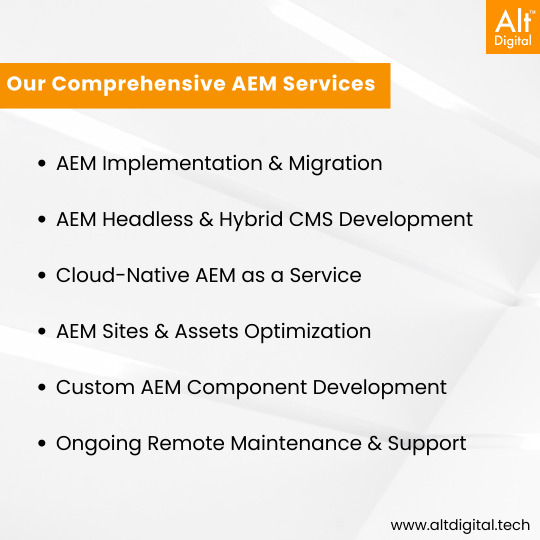

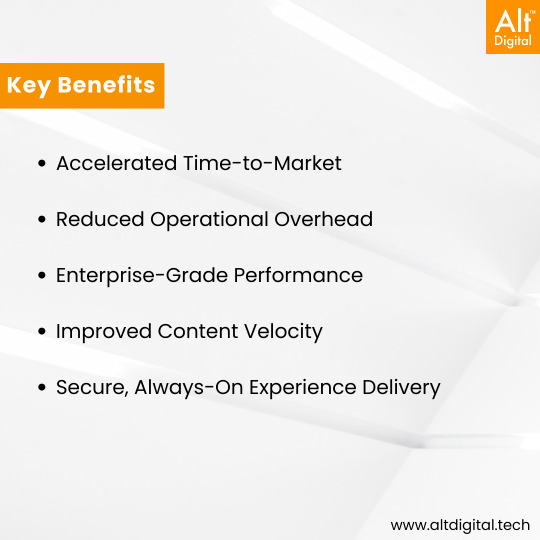
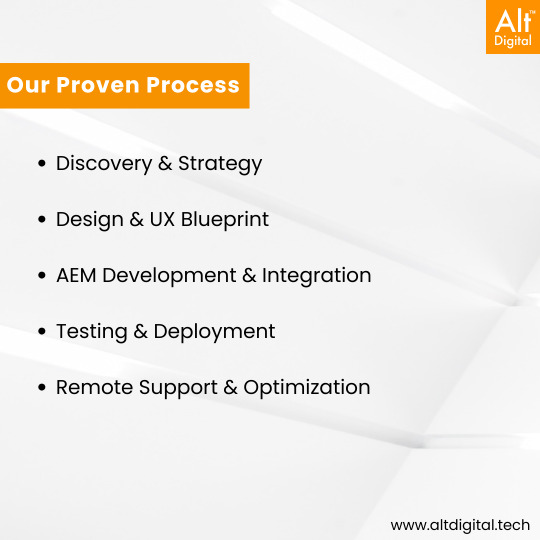
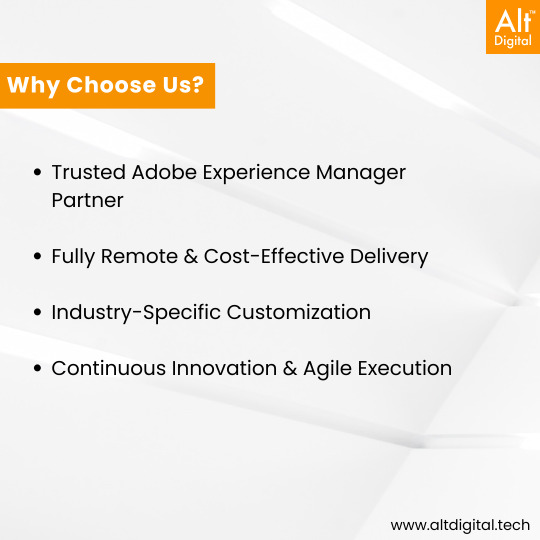

🚀 Power Your Digital Transformation with Alt Digital’s Remote AEM Services! 🚀
Looking to accelerate your Adobe Experience Manager projects without geographical constraints? Alt Digital Technologies brings you expert, fully remote AEM services designed to deliver scalable, secure, and future-ready digital experiences.
Our certified team handles everything from AEM implementation and headless CMS development to cloud-native deployments and ongoing support — all with agility and transparency.
✨ Why choose us?
Adobe-certified experts
Remote-first delivery model
Faster time-to-market
Seamless integration with your existing tech stack
Enterprise-grade security and performance
Transform your digital experience platform with Alt Digital — remotely and seamlessly. Let’s build the future together!
#AEM #AdobeExperienceManager #RemoteTeams #DigitalTransformation #CloudNative #AltDigital #C2C #CustomerExperience #CMS #EnterpriseCMS
0 notes
Text
Building Better Online Stores: Choosing the Right eCommerce Development Services
Creating an effective eCommerce store requires more than just a great idea. It demands a reliable platform, strong functionality, and a development team that understands business needs. Whether you're starting from scratch or improving an existing store, choosing the right ecommerce development services is critical.
This article explores popular platforms—Shopify, WooCommerce, and Adobe Commerce—and highlights how tailored development services can help businesses grow and adapt in a competitive digital market.
Shopify Development Services: Fast, Flexible, and Scalable
Shopify development services are a strong choice for businesses looking for a streamlined, scalable solution. Shopify’s cloud-based infrastructure makes it easy for merchants to launch quickly without worrying about server maintenance or complex setup.
Key benefits of working with Shopify developers include:
Custom theme development and UI adjustments
Integration with third-party apps and payment systems
Optimization for mobile and SEO
Support for multi-channel selling (Instagram, Facebook, Amazon)
Shopify is especially useful for businesses that want a simple, secure, and fast setup with room to grow. While it may have limitations in advanced customization, experienced developers can extend its features with custom apps and APIs.
Adobe Commerce Development Services: Enterprise Power with Flexibility
Formerly known as Magento, Adobe Commerce development services are geared toward medium to large businesses with complex needs. Adobe Commerce offers full control over the store’s design, user experience, and backend logic.
Why choose Adobe Commerce?
Advanced product catalog and pricing options
Multi-store and multilingual capabilities
Scalable architecture suitable for high-traffic websites
Integration with ERP, CRM, and other enterprise tools
With its robust system and flexibility, Adobe Commerce is ideal for companies that need a custom-built solution capable of handling multiple business processes within a single platform. However, it often requires more time and budget to implement and maintain.
Woocommerce Development Services: Open Source and WordPress-Friendly
For businesses already using WordPress, Woocommerce development services offer a practical and cost-effective way to expand into online selling. WooCommerce is a plugin that turns any WordPress site into a fully functional eCommerce store.
Key advantages include:
Seamless integration with WordPress themes and plugins
Open-source flexibility for custom development
Strong community support and frequent updates
Simple management for smaller inventories
WooCommerce is best for small to medium-sized businesses looking for a user-friendly, customizable store. It can be extended with a variety of plugins for shipping, inventory management, and payment gateways, making it a versatile solution for content-driven websites.
Choosing the Right eCommerce Development Services for Your Business
Selecting the right ecommerce development services depends on several factors:
Business size and budget: Shopify is ideal for startups, Adobe Commerce for enterprises, and WooCommerce for content-focused or smaller businesses.
Customization needs: Adobe Commerce offers the most freedom, followed by WooCommerce. Shopify is more limited but easier to manage.
Team resources: If you don’t have technical support in-house, Shopify or WooCommerce (with managed hosting) might be easier to maintain.
Future goals: Consider which platform scales best with your long-term plans—whether it’s global expansion, omnichannel selling, or complex workflows.
Each platform has its own strengths, and working with a development partner who understands the nuances of each system is essential.
One Brand, Many Solutions
One provider that works across all these platforms is webiators, offering comprehensive development services tailored to client needs. With expertise in Shopify, Adobe Commerce, and WooCommerce, businesses can find guidance that’s rooted in technical knowledge and practical implementation.
From initial consultation to post-launch support, an experienced team can ensure that your online store is not just functional but aligned with your business strategy.
Final Thoughts
In today’s digital-first world, the success of an eCommerce business hinges on the strength of its technology foundation. Whether you opt for Shopify development services for simplicity, Adobe Commerce development services for enterprise-level control, or Woocommerce development services for open-source flexibility, choosing the right partner and platform is key.
By carefully evaluating your business requirements and growth plans, you can make informed decisions and build an online store that performs well now and scales with your future.
0 notes
Text
ADOBE EXPERIENCE PLATFORM LEAD
RESPONSIBILITIES:Platform Implementation: Lead the setup and configuration of the Adobe Experience Platform, including data schema development, data ingestion processes, and integration with other Adobe and third-party tools. Collaborate with IT and other stakeholders to ensure a seamless implementation process. Data Management and Integration: Design and manage the customer data architecture…
0 notes
Text
Unlocking Learning Potential with Expert Instructional Design Services
In the age of digital transformation and continuous learning, organizations across industries are investing heavily in high-quality training solutions. Whether it's onboarding new employees, upskilling current staff, or delivering engaging e-learning experiences, the role of instructional design has become more crucial than ever. This is where instructional design services come in—offering structured, customized, and impactful learning experiences that align with both organizational goals and learner needs.
What Are Instructional Design Services?
Instructional design services encompass the end-to-end process of designing, developing, and delivering educational and training materials. This process is guided by learning theories and models such as ADDIE (Analysis, Design, Development, Implementation, Evaluation), SAM (Successive Approximation Model), and Bloom’s Taxonomy to ensure effective knowledge transfer and retention.
These services can range from creating e-learning modules and instructor-led training (ILT) to blended learning programs, microlearning, and performance support tools. By leveraging modern instructional technologies and pedagogical strategies, instructional designers craft learning experiences that are interactive, engaging, and measurable.
The Importance of Instructional Design in Today’s Business Environment
Today’s workforce demands agile and relevant learning experiences. Outdated, one-size-fits-all training methods no longer cut it. Organizations need solutions that address specific skill gaps, promote real-world application, and deliver measurable ROI.
Professional instructional design services help businesses:
Improve training efficiency and learner engagement
Align learning objectives with business outcomes
Save time and cost through streamlined training delivery
Offer scalable learning solutions across locations and departments
Ensure compliance and reduce errors in critical roles
From corporate training to academic instruction, instructional design is the bridge between content and comprehension.
Key Components of Quality Instructional Design Services
High-impact instructional design involves several key components, each tailored to support learner success:
Needs Analysis Instructional design starts with a thorough analysis of the learners, learning goals, and business objectives. This ensures the training content addresses the right problems.
Curriculum Development Experts design a detailed curriculum and structure the content in a logical flow. This includes deciding on the format—e-learning, workshops, video tutorials, or blended models.
Content Creation Instructional designers work with subject matter experts (SMEs) to develop content that is engaging, relevant, and easy to digest. Graphics, simulations, and assessments are integrated to support various learning styles.
Technology Integration The use of Learning Management Systems (LMS), authoring tools (like Articulate Storyline or Adobe Captivate), and AI-powered platforms allows for interactive and accessible learning experiences.
Evaluation and Feedback A robust instructional design process includes pre- and post-assessments, feedback collection, and performance tracking to continuously improve the learning solution.
Who Needs Instructional Design Services?
Instructional design isn’t limited to educational institutions. Today, a wide variety of sectors are benefiting from professionally designed training programs:
Corporates: For employee onboarding, compliance training, leadership development, and sales enablement.
Healthcare: For clinical training, patient education, and procedure-based learning.
Government: For workforce development, public awareness programs, and policy training.
Nonprofits: For volunteer training, community education, and donor engagement.
Academic Institutions: For developing online courses, digital textbooks, and curriculum enhancements.
Regardless of the industry, instructional design services can significantly elevate the learning experience and help achieve organizational effectiveness.
Custom vs. Off-the-Shelf Training Solutions
Many organizations face a choice between off-the-shelf training and custom-designed instructional content. While pre-made content may offer a quick fix, it often lacks the relevance and alignment needed for long-term success.
Custom instructional design services provide tailored solutions that reflect your company’s culture, systems, and unique challenges. This personalization leads to more engaged learners, better outcomes, and a stronger return on investment.
Benefits of Partnering with a Professional Instructional Design Firm
Outsourcing instructional design to experts offers several benefits:
Access to Expertise: Work with experienced designers, content developers, and technologists.
Time Efficiency: Focus internal resources on core business functions while experts handle training development.
Cost-Effective Scaling: Easily scale learning solutions across departments and geographies.
Quality Assurance: Ensure consistency, interactivity, and alignment with learning best practices.
Innovation: Stay ahead of trends with the latest tools, gamification, and mobile-friendly solutions.
Choosing the right instructional design partner is critical. Look for a provider with a proven track record, industry experience, and a learner-centered approach.
Future Trends in Instructional Design Services
As technology continues to evolve, so too does the field of instructional design. Here are a few emerging trends:
AI-Driven Personalization: Tailored learning paths using AI and data analytics.
Immersive Learning: Use of AR/VR for experiential training environments.
Microlearning: Bite-sized modules for just-in-time learning and mobile consumption.
Social Learning: Integration of collaborative platforms and peer-to-peer knowledge sharing.
Continuous Learning Culture: Designing learning ecosystems rather than one-time training events.
Forward-thinking organizations are already leveraging these trends through advanced instructional design services to maintain a competitive edge.
Conclusion
In a rapidly changing world where knowledge is power, investing in high-quality instructional design services is no longer optional—it’s essential. Whether you're a business aiming to improve performance, an institution looking to modernize curriculum, or a nonprofit hoping to boost impact, instructional design is the cornerstone of effective learning. By choosing the right partner and approach, you unlock the full potential of your learners and set the stage for lasting success.
0 notes
Text
AEM Best Practices: Optimizing Your Website for Maximum Performance
Optimizing your website with Adobe Experience Manager is crucial for delivering a superior user experience and achieving your business objectives. By implementing these AEM performance best practices and partnering with experts like EnFuse Solutions, you can optimize your website for maximum performance, driving better engagement, higher conversions, and long-term success.
#AEMBestPractices#AdobeExperienceManager#WebsiteOptimization#PerformanceTuning#AEMDevelopment#DigitalExperiencePlatform#SiteSpeedOptimization#WebPerformance#AEMTips#EnterpriseWebSolutions#ScalableWebArchitecture#EnFuseSolutions#EnFuseSolutionsIndia
0 notes